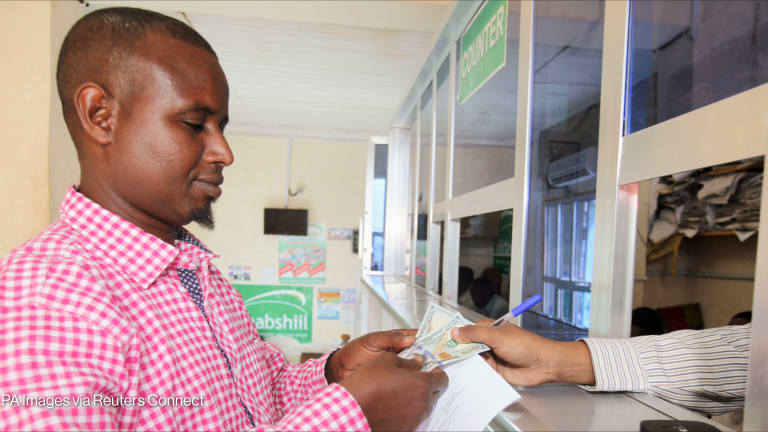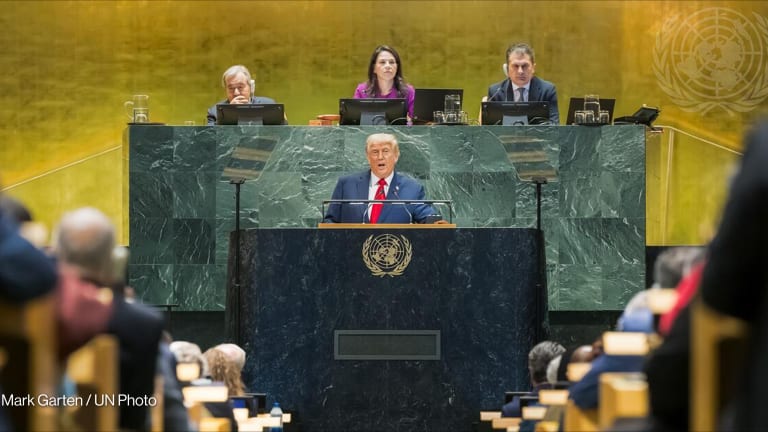
Imagine an Indian family’s eldest son leaving his village to pursue a greater fortune halfway across the world. He ends up driving a taxicab in New York City and sends the lion’s share of his meager income home, in bundles of $100 notes. The money enables his family to initially subsist, then save enough to become consumers and, in the process, circulate cash and create jobs for those providing local goods and services.
Similar stories happen across the globe today. The World Bank estimated that in 2007, emigrants sent $251 billion to their families and friends back home, often in modest transactions that complicate the tracking of remittances. Several governments - of both donors and recipients of remittances - are using emerging data on remittances to guide their aid strategies.
Foreign diasporas are seen by many donor governments as ideal vehicles for development aid: Not only do they have the language and local knowledge vital for administering effective aid, but they are also conveniently based in a donor government’s own backyard.
The record levels of money remitted to Pakistan - more than $6 billion in 2008, according to World Bank estimates - have impelled the Norwegian government to make the country’s Pakistani diaspora part of its aid strategy.
Remittances have been hailed as a means of mitigating the “brain drain” emigration causes in developing countries. Because remittances involve direct and personal transactions, they sidestep the bureaucracy, corruption and logistical oversights that government aid is prone to, according to Allah Nawaz Samoo, a consultant for the Pakistan-based Sustainable Development Initiative.
Without remittances, the Pakistani capital lost through migration would never be renewed, Samoo argued.
Remittances can also be a key ingredient for self-sustaining development.
“That’s the magic,” said Adil Najam, author of “Portrait of a Giving Community: Philanthropy by the Pakistani-American Diaspora” and professor in international relations at Boston University. “Economies develop not just because you have roads and dams and schools, but because you have economic vibrance that keeps economic motor going.”
It takes a village
Many emigrants donate not just to their families back home, but also to their villages or communities. Governments in Mexico, the Philippines, Latin America and Africa have long tapped into that resource, according to Kathleen Newland, co-founder of the Migration Policy Institute, a nonprofit think tank based in Washington, D.C.
Hometown associations set up by immigrant communities are often backed by the governments of countries to which remittances are sent to. These associations allow emigrants to fund projects back home by pooling their remittances, which reduces the cost of money transfers. Governments in Mexico and Philippines, for instance, are matching incoming remittances through these associations.
The Mexican government’s Tres por Uno program is one of the most well-known fund-matching schemes. In 2005, hometown associations raised approximately $20 million for development projects throughout Mexico; the country’s federal, state and local governments contributed another $60 million.
Although these joint efforts are highlighting areas of need and helping to combat the increasingly high costs of international money transfers, they may also lead to inefficiently and unfairly distributed remittances, organizations such as the Migration Policy Institute have argued.
Many hometown associations and similar “clubs” based in Latin America, for instance, lack the resources and training to handle the large pools of money collected from immigrants, according to Iñigo Moré, president of Remesas, a Madrid-based research institute focusing on remittances. Also, the associations may not always address a developing country’s most vital needs, Moré pointed out.
Emigrants “are so relieved that they have crossed the border, they send money back home to build churches, and the government helps them,” said Moré, who argued that building churches was not the Mexican government’s domain.
Another pitfall is the potential for conflicts of interests caused, for instance, by the underrepresentation of women.
Sharpening a donor aid focus
The Norwegian government is hoping to avoid such risks with the Pilot Project Pakistan, which the Norwegian Agency for Development Cooperation is creating in collaboration with Norwegian-Pakistani organizations and various nongovernmental organizations.
Norad plans to set up a bidding system by next year to fund Pakistani development projects spearheaded by Pakistani immigrants. It has allocated 1 million Norwegian krona (approximately $185,829) to the pilot project this year and 5 million Norwegian krona for 2009.
Norad sees an opportunity in the high level of remittances to Pakistan flowing from the Pakistani diaspora. Such remittances currently amount to roughly three times the Norwegian government’s assistance.
“What has been happening is groups of people have been giving money into a system that they don’t really know much about,” said Alf Arne Ramslein, assistant director-general for the south Asia section of Norway’s Ministry of Foreign Affairs. “They appreciate there is now going to be a mechanism for a partnership between businesses and the government.”
The initiative seeks to enable Pakistani organizations that have the “competency and capacity” to advise and train smaller organizations and thereby distribute best practices in a way that government bureaucracy alone cannot, according to Ramslein.
“This is going to be a springboard for more meaningful results, a mechanism which can also be good for facilitating between Norwegian and Pakistani organizations,” Ramslein explained.
Several donor governments are engaging foreign diasporas on the matter of remittances. The U.K. Department for International Development, for instance, was involved in setting up the Send Money Home program, an online portal that allows immigrants in the United Kingdom to find ways to remit funds.
But Norway’s Pilot Project Pakistan, if successfully implemented in the coming year, may be a donor government’s most far-reaching attempt yet to engage immigrant communities in international aid. It reverses the hometown association model and is a unique experiment in migration development, according to Newland. For the Norwegian government to follow migrant-led strategies and put in place mechanisms to steer donations to the most effective organizations and projects is “a good impulse,” she said.
Challenges of government intervention
The World Bank is currently researching ways on how governments and other stakeholders may reduce the cost of transferring money. Meanwhile, some governments are considering taxing remittances. The debate on whether governments should interfere with remittances at all continues.
“The whole beauty of remittances is that they come in small packages,” said Najam.
Remittances may achieve a level of small-scale livelihood support that governments are simply too bureaucratic to deal with, he noted.
The best way for the Norwegian government to work with foreign diasporas is to have them monitor aid projects, said Fiza Shah, chief executive officer of Development in Literacy, an NGO based in the United States and Pakistan.
“The areas of most need are the ones that are most difficult,” said Shah. “We can go in more easily, because we speak the language, we look like them, we’re not a threat to them.”








